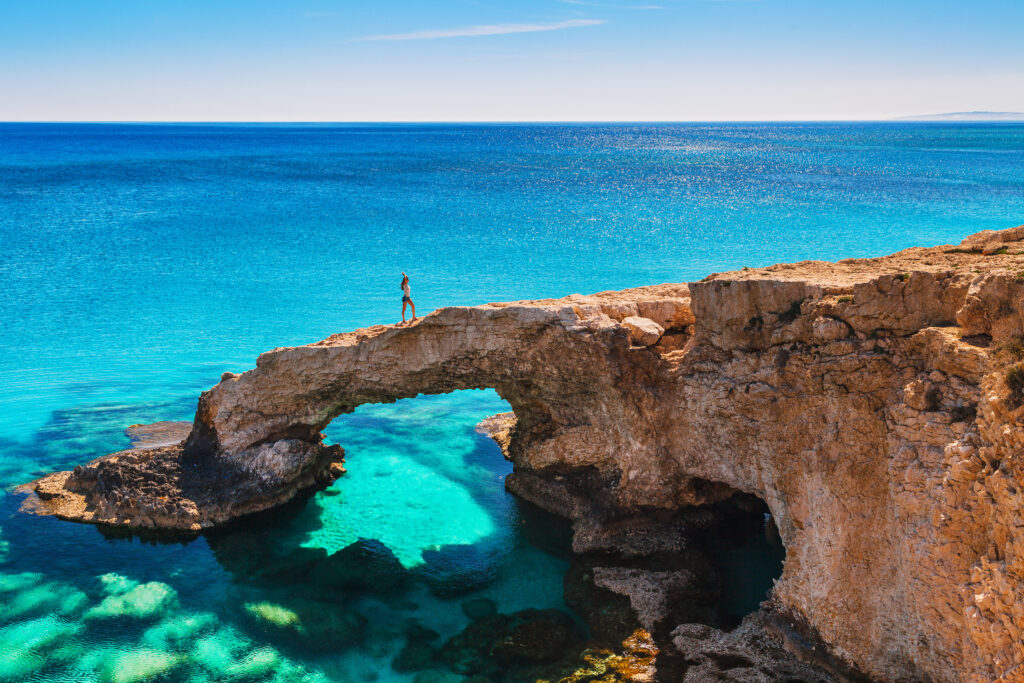
Greek? Turkish? No, Cypriot! This is undoubtedly one of the European countries most influenced by its neighboring cultures. At the crossroads of great civilizations, Cyprus nonetheless harbors wonders and treasures of its own, among the most beautiful landscapes in the Mediterranean. Legend has it that Aphrodite was born here, from the foam produced by the sea washing over the rocks of the Paphos coast. It's no coincidence that the goddess of beauty and love was born here... Petit Futé takes you on a discovery of the "island of love".
1. Omodos and its wine villages
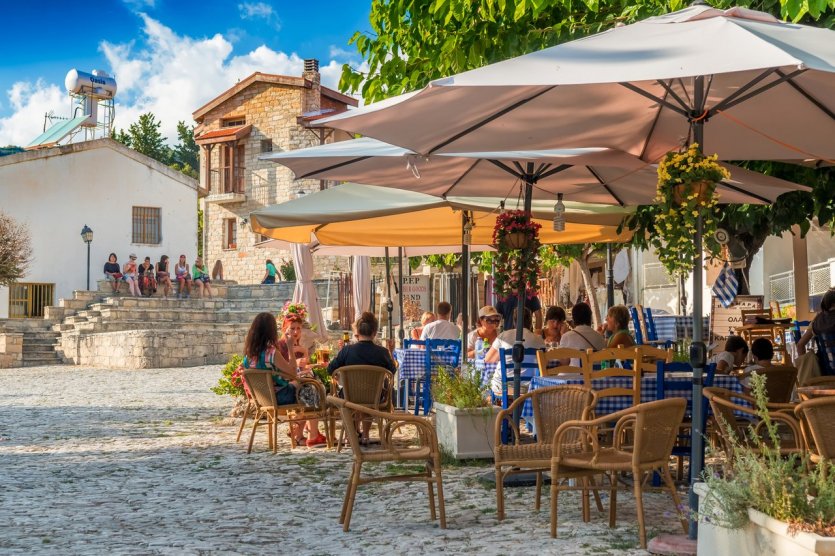
Nestled between high peaks and surrounded by splendid greenery, Omodos is one of the pearls of Cyprus. Here, the land is fertile and vines and fruit trees are planted in abundance. Take a walk through the vineyards and discover the agricultural work of the local people, who are so proud of their land. Another must-see is the Tímios Stavros monastery. It's one of the oldest in the country. Its unique Greek letter architecture amazes visitors from all over the world. Book your guided day trip to the mountains and villages of the Troodos, including Omodos, here.
2. Larnaka, a dive into history
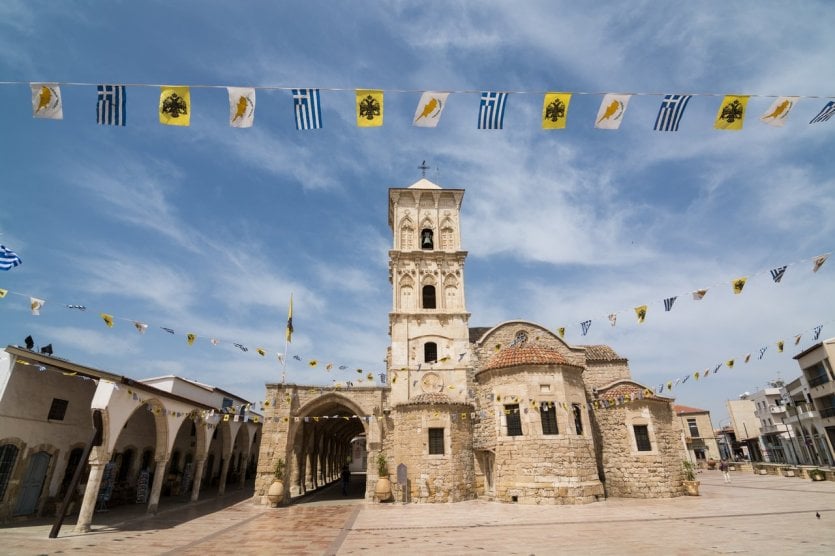
Larnaka is one of the oldest towns in Cyprus: inhabited since the 14th century BC, it has been conquered by many peoples over the centuries. Its fort, built in the 14th century during the reign of James I of Cyprus on the ruins of a 12th-century Byzantine fortress, was used to defend the port. Today, it houses a medieval museum with an eclectic collection of objects. The new town is home to numerous museums and renowned restaurants. In the center of the country, Larnaka is a great place to stay or take a glass-bottomed boat cruise in the bay with snorkeling by booking here !
3. What to do in Cyprus Go to Limassol, discover the South
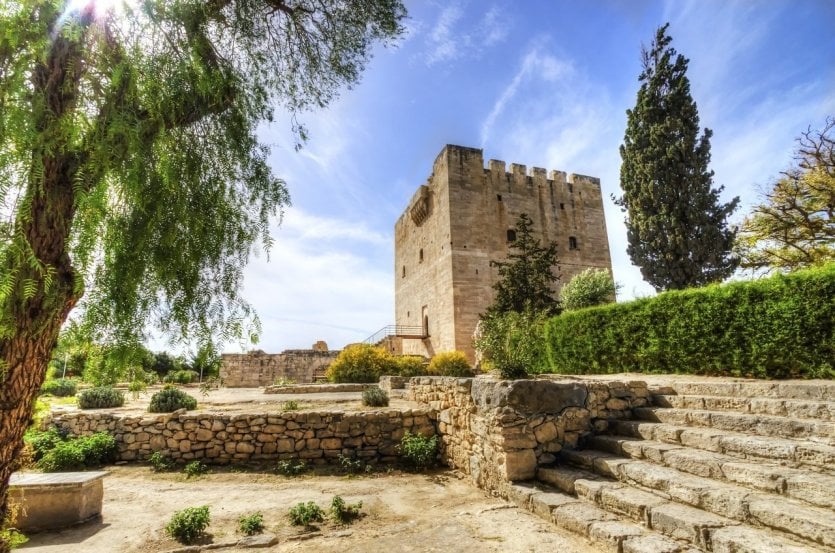
The most beautiful beaches in Cyprus are certainly to be found on the south coast. Limassol offers all the attractions of a large city, the island's second-largest, yet is still by the sea. Its long, palm-fringed coastline and grey-sand beaches are ideal for relaxing. When it comes to entertainment, little ones will love the Water Mania water park, ideal for a family day out. And don't miss the castle near the old port: now a medieval museum, it was rebuilt during the Ottoman period in the 16th century.
Click here to book your guided tour of Limassol!
4. Kyrenia and its old port
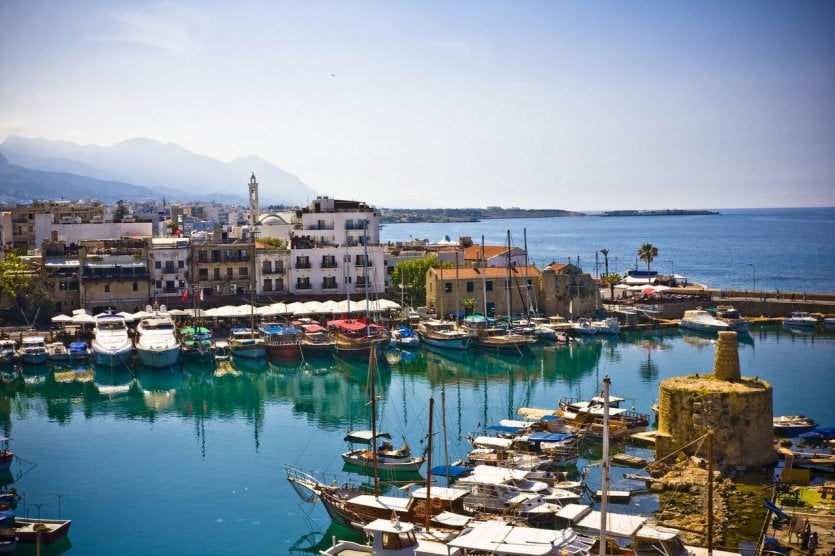
Kyrenia is a bit like the Cypriot dolce vita! Surrounded by mountains, this charming town is often considered the most attractive in the north of the island. Its picturesque old harbour is one of the reasons for this: people come here to sip a drink in a sumptuous, colourful setting overlooking the sea. These trendy establishments have taken up residence in former warehouses where carob seeds, the treasure of Cyprus, were stored. A Frankish castle, built by the Byzantines, overlooks the town, offering a magnificent view of the surrounding area. A beautiful stopover!
5. What to do in Cyprus Taste the mezze

A palette of colors and flavors, mezze is typical of oriental gastronomy. There are usually around thirty different dishes. You're probably familiar with hummus, a succulent chickpea puree, and maybe even tzatziki... But that's just the beginning! Then come the fish and meat dishes: calamari, sheftalia ... All mouth-watering words! A word of advice: eat slowly if you want to taste all the dishes!
6. Petra tou Romiou, birthplace of Aphrodite
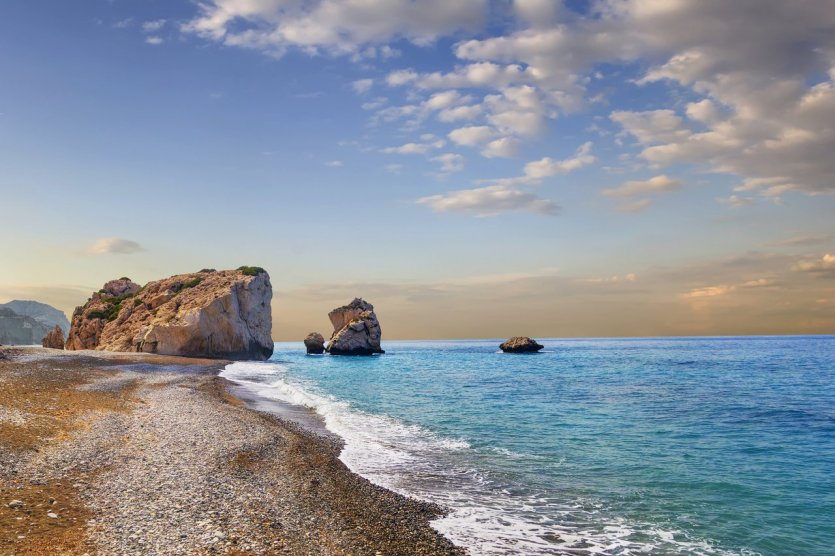
20 km from Paphos, the beach of Petra Tou Romiou is one of the most famous in Cyprus. The Greek goddess Aphrodite is said to have been born here... It is even said that the foam produced by the waves as they meet the rock still forms almost human shapes today. Could it be that the goddess is beckoning to visitors? A not-to-be-missed detour for a taste of Cypriot waters!
7. What to do in Cyprus See The ancient city of Salamis
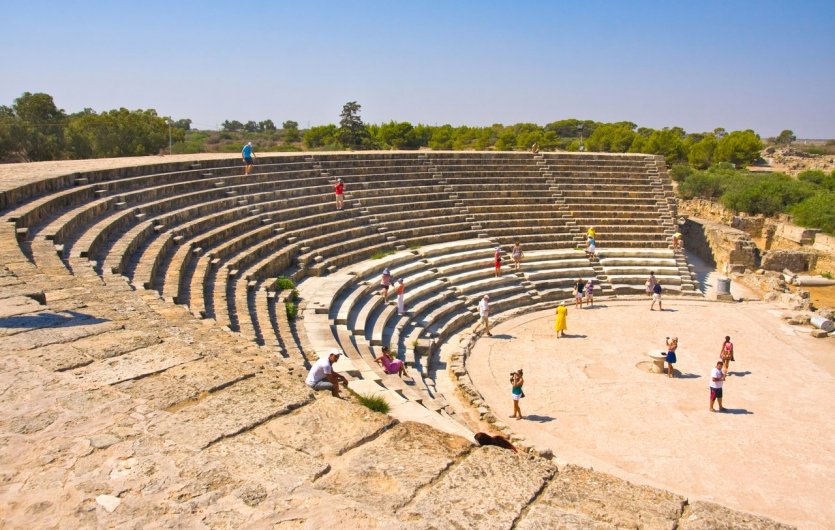
This ancient city-state witnessed a succession of Assyrian, Phoenician, Greek, Persian, Egyptian, Hellenistic, Roman and Byzantine cultures from the 11th to the 7th century A.D. Along with Paphos, it is one of the island's most beautiful archaeological sites. The 5 km2 seaside site reveals the remains of statues, porticoes, gymnasiums, basins and even a temple dedicated to Zeus, a sign of past prosperity. An exceptional dive into history!
8. Nicosia, from north to south
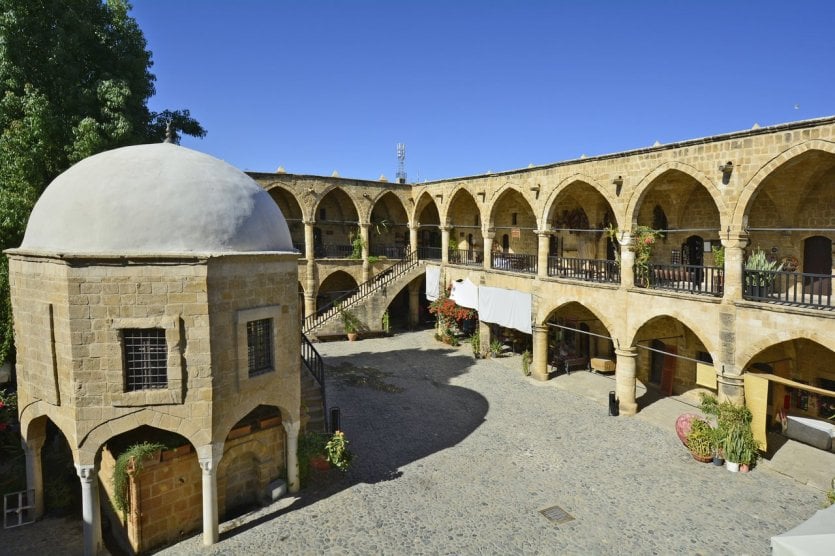
Nicosia, the island's capital, is divided in two by the border known as the "green line". Nicosia-Nord stands in stark contrast to its southern counterpart. The elegant boutiques of the south, for example, give way to quaint stalls and attractive pastry stalls. Linger in front of the mosque or take advantage of a relaxing hammam to meet the inhabitants of this original capital. You're sure to fall in love! Click here to book your guided tour of Nicosia.
9. What to do in Cyprus Visit Kourion, the ancient site
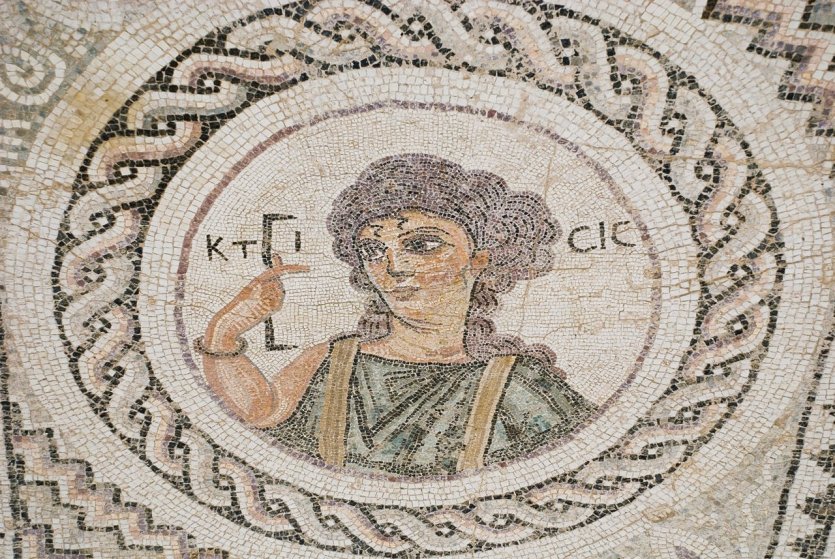
Built in the Neolithic era on a sumptuous site overlooking the sea, Kourion is located on the island's southern coast. Although the earthquake of the 4th century BC wiped out much of the ancient city, sumptuous remains such as well-preserved mosaics, thermal baths and even an amphitheatre where open-air operas are still performed. The beach at Kourion is a great place to cool off after your visit!
Immerse yourself in history and archaeology by booking this excursion to Paphos from Larnaca, which includes a guided tour of the archaeological site of ancient Kourion.
10. Paphos, a treasure trove
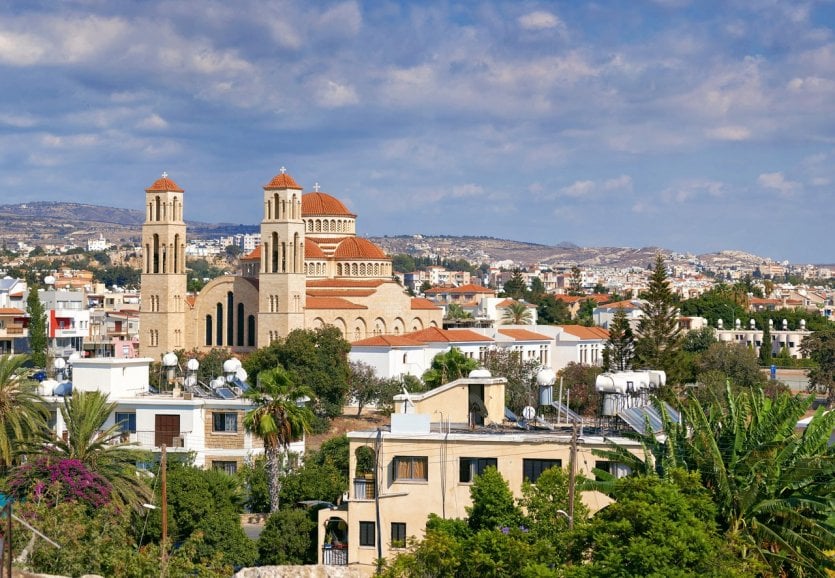
On the southwest coast of Cyprus, Paphos is a renowned seaside resort with popular beaches. More than its coastline, it's its famous archaeological site that's not to be missed. A symbol of the town's past, the vast ancient city dates back to the late 4th century. The soil of Paphos still abounds with treasures that archaeologists are gradually uncovering... Don't miss the splendid Roman mosaics dedicated to Dyonisos, considered to be the most beautiful in the Middle East and the pride of the entire city.
Paphos is also one of our top 10 places to retire in Europe!
11. What to do in Cyprus Cape Greco
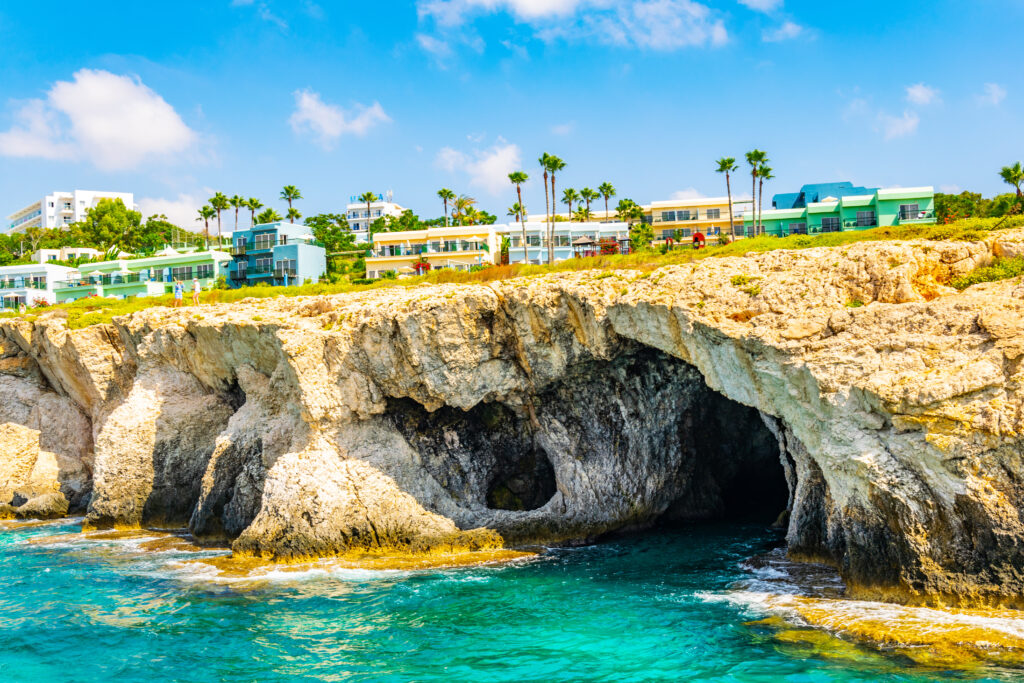
Located in the municipality of Agia Napa, south-east of Protaras, Cape Greco is a headland jutting out into the sea, dedicated in ancient times to the goddess Aphrodite. This still wild and deserted area is also a nature park with amazing local flora and fauna , as well as natural arches and beautiful sea caves. The contrast between the bustle of Protaras, just a few kilometers away, and this area is striking. As soon as you leave Protaras, on the road to Agia Napa, you find yourself in the utmost tranquillity for a walk along the coastal path.
12. What to do in Cyprus See Bellapais Abbey
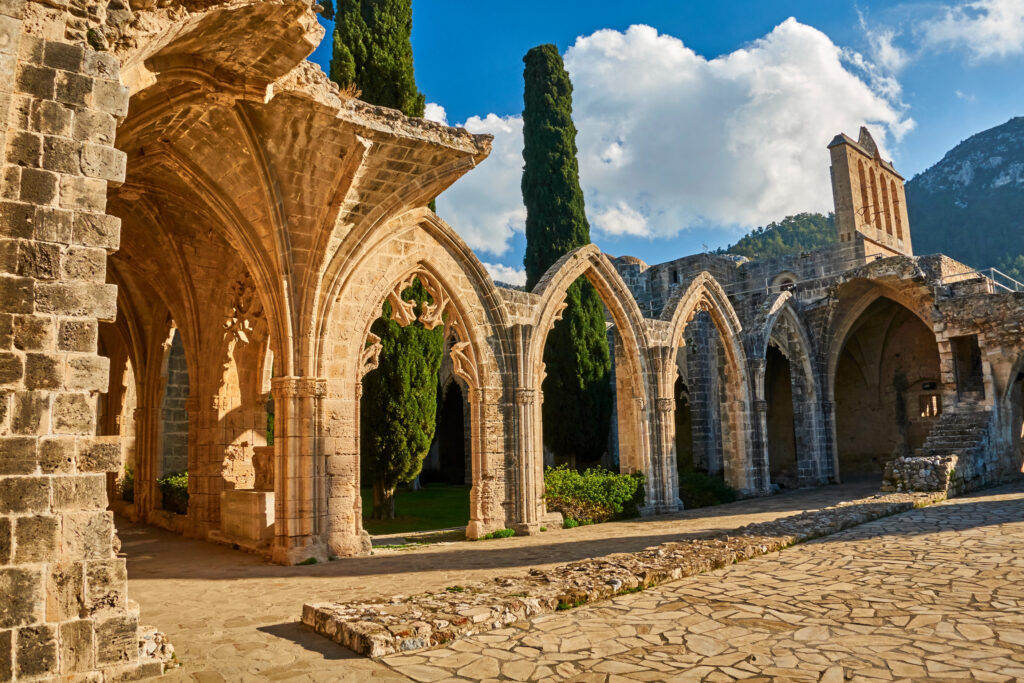
This is a must-see during your stay in Cyprus. Bellapais Abbey is an ancient French Catholic abbey dating from the 13th century. You'll see magnificent Gothic ruins and enjoybreathtaking panoramic views of the sea and the surrounding green villages. The abbey retains five buildings: church (south), cloister (center), refectory (north), dormitory and chapter house (east). Inside, the beautiful pointed vaults are reminiscent of some 12th-century French churches. If you'd like to see the abbey, we recommend booking this half-day tour of St Hilarion and Bellapais Castle.
What to visit in Cyprus in 5 days
Cyprus is a Mediterranean island rich in history, culture and natural beauty, ideal for soaking up the sun in October or November. In fact, it's one of our picks for the best sun destinations in Europe for an extended weekend. Here's a suggested itinerary for a 5-day stay in Cyprus:
Day 1-2: Nicosia
- Explore Nicosia's old town, with its narrow streets, ancient churches and local markets.
- Visit the green line that divides the city into Greek and Turkish parts.
- Discover the Archaeological Museum of Cyprus and the Leventis Art Museum.
- Enjoy Nicosia's lively nightlife.
Day 3: Limassol
- Visit Limassol Castle, home to the Medieval Museum of Cyprus.
- Stroll along the seafront promenade and relax on the sandy beaches.
- Explore Limassol's historic quarter with its quaint boutiques and cafés.
Day 4: Paphos
- Discover the archaeological sites of Paphos, including the Tombs of the Kings and the mosaics of the House of Dionysus.
- Visit the port of Paphos and explore the city's medieval quarter.
- Enjoy the sunset at Petra tou Romiou, also known as Aphrodite's Rock.
Day 5: Troodos Mountains
- Explore the Troodos Mountains, visiting the picturesque village of Omodos.
- Explore the monastery of Kykkos, one of the most famous in Cyprus.
- Hike the mountain trails to enjoy the spectacular natural scenery.
What can you visit in Cyprus in a week?
With two extra days, you can deepen your exploration of Cyprus by including other interesting sites. Here's an extension of the previous itinerary:
Day 6: Larnaca
- Explore the old town of Larnaca and visit the Church of Saint Lazarus and the Museum of Islamic Art.
- Relax on Finikoudes beach and discover the famous promenade.
Day 7: Day trip to Akamas Peninsula
- Take a day trip to the Akamas Peninsula, an unspoilt nature reserve.
- Hike through the Avakas Gorge and explore the wild beauty of the area.
- Opt for a cruise around Blue Lagoon Bay to enjoy the crystal-clear waters.
This extension will add the diversity of Larnaca and the natural adventure of the Akamas Peninsula to your itinerary. Don't forget to adjust your timetable to suit your personal preferences and take time to immerse yourself in the local culture, sample Cypriot cuisine and enjoy relaxing moments on this beautiful island.
Want to discover Cyprus but don't know when to go? Discover our dedicated article "10 good reasons to enjoy the off-season in Cyprus".


